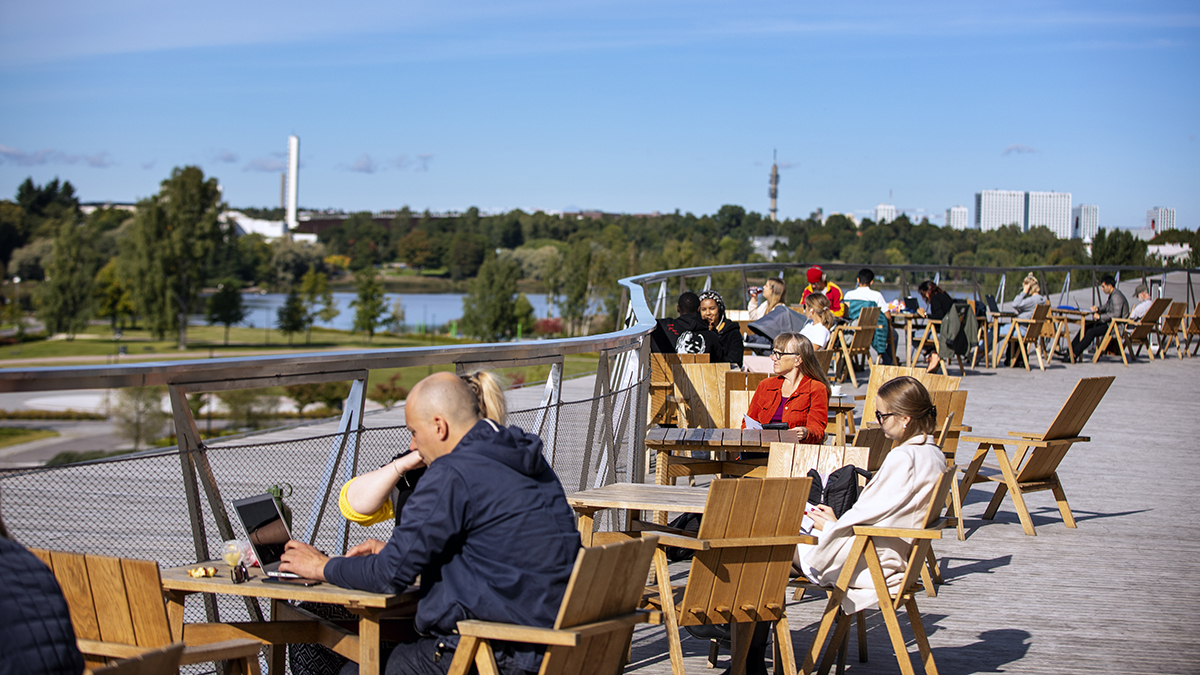Experiments provided cities with tools for more interactive sustainability work

As part of the Ministry of the Environment's Sustainable City programme, twelve experiments on sustainable urban development were carried out between 2022 and 2023. They focused on inclusion, interaction and solutions that cut across dimensions of sustainability. The results included, among others, a local sustainable development agreement model, a digital portal for resource wisdom work that supports cooperation within the city, and new ways of involving residents in urban planning and municipal sustainability measures.
In Tampere, a carbon footprint calculator was used to develop ecologically and socially more sustainable mobility in cooperation between the City of Tampere, the University of Helsinki and VATT. The project examined whether targeted health communication could be used to motivate people to choose more sustainable modes of mobility, such as walking or cycling. All app users received information on the impacts of their mobility on the carbon footprint and the city's carbon neutrality target. In addition, the application provided people selected to a test group with information on how they meet the recommendations for physical exercise and on the health impacts of the journeys they had made using their muscles.
“Based on the study, people found the health messages interesting and internalised the information offered, but they did not change their mobility choices during the review period. To make the change happen, other means are also needed, such as favouring sustainable modes of transport in zoning and design solutions,” emphasises Project Manager Anna Vilhula from the City of Tampere.
Many experiments provided cities with new ways to collaborate with the residents, stakeholders and different units in the city organisation. The Sustainable Inclusion in Lahti project developed tools and models for planning and implementing inclusion. The project developed the Skididialogi method further and strengthened its position as a sustainable inclusion method for the city. A separate dialogue method, Miniskididialogi, was also developed for early childhood education and care. The Skididialogi and Miniskididialogi methods make children and young people's voices heard in sustainability themes and other topical issues. In addition, the project built a planning template for inclusion, an interactive model for sustainability work to be used in regional partnerships, and introduced the Kerro Pois! concept that generated dialogue between the inhabitants of the region, partnerships and the city organisation.
“Sustainable urban development requires that the well-being of nature, human beings and the economy are reconciled with each other. The best ways to accelerate sustainable development are found in cooperation between cities, municipalities, residents and other stakeholders. The projects that are now coming to an end have produced several solutions that increase collaboration within municipalities and help residents to participate in the municipality's sustainable development work. They should also be put to use in other municipalities,” says Virve Hokkanen, Programme Manager of the Sustainable City programme.
The Sustainable City programme coordinated by the Ministry of the Environment produces solutions that cut across dimensions of sustainability for sustainable urban development and intensify cooperation between the state and cities in sustainable urban development. The measures have improved the preconditions for emission reductions and social sustainability in communities, supported the diversity and well-being impacts of local nature, and strengthened sustainability management and new ways of participation. The Sustainable City programme has been going on since 2019, and the work will continue until the end of 2023. So far, around 90 cities and municipalities and around 70 other organisations have participated in the programme.
Experiments of participatory and interactive sustainability work
- City of Espoo. The Future Workshop for Sustainable Development (TUPA).
- City of Hämeenlinna. Urban living room in Hämeensaari.
- City of Jyväskylä. REDI(4)2030 = Digital portal for resource wisdom work of the City of Jyväskylä – strengthening information-based management and communication on a shared journey towards a carbon-neutral city in 2030.
- City of Järvenpää. Eco-socially sustainable event production model.
- City of Kouvola. Making the sustainable development operating model part of the residents' everyday life with the help of regional committees.
- City of Kuhmo. Full life in Kuhmo – Sustainable development through everyday actions.
- City of Lahti. Sustainable inclusion in Lahti.
- City of Lappeenranta. Awfully wonderful! – Making sustainable actions visible by means of environmental art.
- City of Nurmes, Espoo and Siuntio. Urban planning and culture divisions building a (joint) model of smart and socially sustainable resident inclusion.
- City of Tampere. KELI – Promoting more sustainable mobility with the help of a carbon footprint calculator.
- City of Vaasa. Vaasa with energetic residents – Invånarenergisk Vasa.
- City of Vantaa. Skills and participation – Engaging children and young people in building a more sustainable food culture.
Inquiries
Virve Hokkanen
Programme Manager
Sustainable City Programme
Ministry of the Environment
[email protected]
tel. +358 29 525 0034
